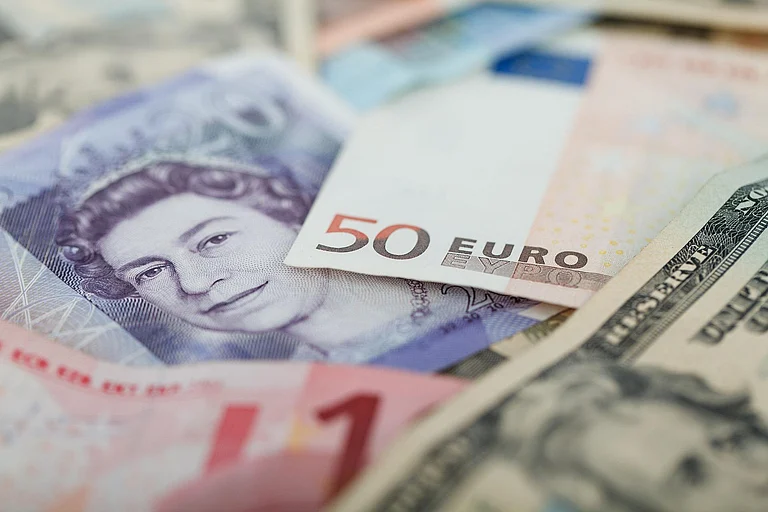The Reserve Bank of India on Thursday clarified that its banknotes with a star mark in the number panel are genuine amid social media discussions over the genuineness of these notes.
RBI had to step in and clarify the genuineness of these notes after concerns were raised by some people on social media. RBI said, “It is informed that the Star (*) symbol is inserted in the number panel of a banknote used as a replacement for defectively printed banknotes in a packet of 100 pieces of serially numbered banknotes.”
What Is The Star Marked Banknote?
The star symbol (*) in the note number added between the prefix and the note's serial number signifies that the note has been reprinted to replace a defectively printed note. As per the RBI, the note is the same as other legal banknotes except for the star mark.
Until August 2006, RBI issued fresh bank notes serially numbered with the stipulated distinctive serial number comprising letters and numerals in packets of 100 pieces.
On August 31 of the same year, RBI announced issuing Star series bank notes that look identical except for a star symbol on the notes' number panel. As per the RBI press release in 2006, "The Star series banknotes will be legal tender and members of (the) public may freely accept and use these banknotes," it said.
Until then, RBI used to print a new note to replace any defectively printed banknote with the same number as the defective note to maintain the sequential numbering of 100 pieces in the packet. But the process was time- and cost-consuming and needed manual intervention.
So, aligning with the international best practices to save cost and enhance operational efficiency at the note printing press, RBI adopted the star series numbering system.
However, one should know what to check in the banknotes to ascertain their authenticity, which is the unique identifier on the banknotes.
How To Check Whether A Banknote Is Genuine?
The first identifier to check in a note is its security thread. The thread is windowed on the front side and embedded on the note's reverse side. Under ultraviolet light, it fluoresces on both sides.
The next thing to check is the portrait of Mahatma Gandhi, the RBI seal, guarantee and promise clause, the RBI governor's signature, the Ashoka pillar emblem, and the identification mark for visually impaired people printed in intaglio.
One can further check the image of Mahatma Gandhi's portrait in the watermark window with its multidirectional lines and electrotype mark showing the denomination in numerals.
The colour effects in the Rs 200, Rs 500, and Rs 2000 banknotes change when a note is placed flat or at an angle. The numeral of the denomination changes colour from green to blue.
The number panel is done in fluorescent ink. Also, optical fibres in the banknotes are visible in ultraviolet light.
The numeral on the left side of the note is printed in a way where one part of the denomination is on the front side, and the other part is on the reverse side. When kept against light, it appears as one number.
The latent image on the right side of the Mahatma Gandhi portrait shows the denomination value. It can be seen when the note is horizontally held with light falling on it.
The banknotes are full of micro letters at different places on the banknotes and can better be seen with the help of magnifying glass.
RBI introduced a few more unique identification features in 2015, such as the number pattern size, where the letter in the number panel is the same size, and the numerals ascend from left to right in both the number panels on the notes. The other feature is the angular bleed lines for denominations of Rs 100, and onwards, that is, “4 lines in 2 blocks in ₹100, 4 angular bleed lines with two circles in between in ₹200, 5 lines in 3 blocks in ₹500, 7 in ₹2000”, as per RBI.













